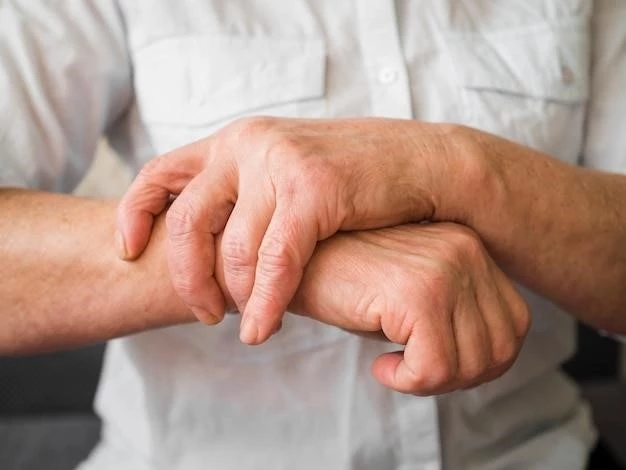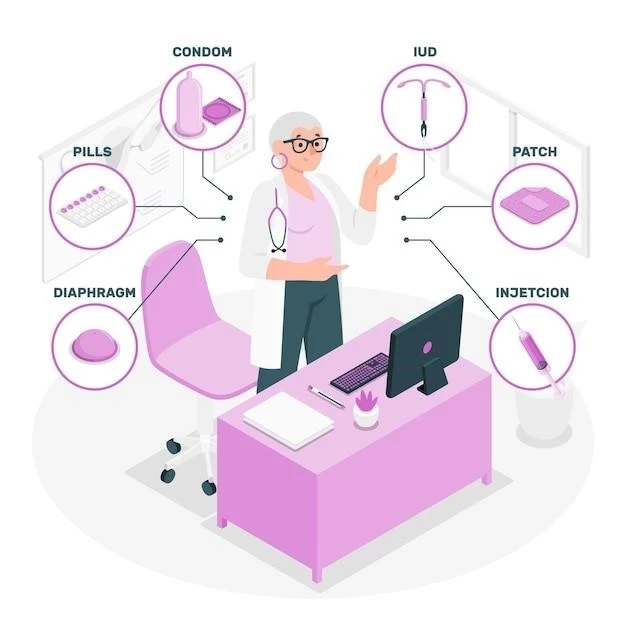Disease⁚ Meningoencephalocele-Arthrogryposis-Hypoplastic Thumb
Meningoencephalocele-Arthrogryposis-Hypoplastic Thumb is a rare syndrome characterized by neurological complications, congenital malformations, and limb abnormalities․ Understanding the genetic factors behind this condition is crucial for effective management and treatment approaches․
Introduction
Meningoencephalocele-Arthrogryposis-Hypoplastic Thumb is a complex and rare syndrome that involves a combination of serious health conditions․ Meningoencephalocele refers to a neural tube defect where the brain protrudes through an opening in the skull․ Arthrogryposis is characterized by multiple joint contractures at birth, limiting movement․ Hypoplastic thumb is a congenital deformity where the thumb is underdeveloped or absent․
This condition affects the brain, spinal cord, and limbs, leading to various neurological and physical challenges․ Understanding the underlying genetic and congenital factors of Meningoencephalocele-Arthrogryposis-Hypoplastic Thumb is crucial for diagnosis and developing personalized treatment plans․ This introduction sets the stage for a detailed exploration of the different components of this complex syndrome and the approaches to managing it effectively․
Understanding Meningoencephalocele
Meningoencephalocele is a serious congenital malformation where the protective membranes surrounding the brain and part of the brain tissue itself protrude through an opening in the skull․ This neural tube defect occurs during embryonic development when the neural tube fails to close completely․ The protrusion typically contains cerebrospinal fluid, meninges, and brain tissue․
Individuals with meningoencephalocele may experience a range of neurological symptoms, including developmental delays, intellectual disability, seizures, and problems with vision or hearing․ The severity of the condition can vary depending on the size and location of the defect․ Diagnosis is usually confirmed through imaging studies such as MRI or CT scans․
Treatment options for meningoencephalocele often involve surgical intervention to repair the opening and reposition the protruding tissues․ Long-term management may include interventions to address neurological complications and developmental delays․ Understanding the complexities of meningoencephalocele is essential for providing comprehensive care to individuals affected by this condition․
Exploring Arthrogryposis
Arthrogryposis is a rare congenital disorder characterized by multiple joint contractures present at birth, affecting two or more areas of the body․ This condition results in limited movement and stiffness in the affected joints․ Arthrogryposis can affect the joints in the arms, legs, hands, and feet, leading to significant physical deformities․
Individuals with arthrogryposis may experience challenges with activities of daily living, mobility, and independent function․ The severity of the contractures can vary, ranging from mild limitations to more severe joint stiffness․ Physical therapy and occupational therapy play a crucial role in managing arthrogryposis by improving joint mobility, muscle strength, and functional abilities․
While the exact cause of arthrogryposis is not always clear, it is believed to result from a combination of genetic and environmental factors․ Early diagnosis and intervention are essential for optimizing outcomes and quality of life for individuals with arthrogryposis․ Exploring the complexities of this condition is vital for implementing tailored treatment approaches and providing comprehensive care․
Hypoplastic Thumb⁚ An Overview
Hypoplastic thumb is a congenital deformity where the thumb is underdeveloped or absent․ This condition can occur as an isolated anomaly or as part of a syndrome like Meningoencephalocele-Arthrogryposis-Hypoplastic Thumb․ The severity of hypoplastic thumb can vary, ranging from mild abnormalities to complete absence of the thumb․
Individuals with hypoplastic thumb may experience challenges with manual dexterity, grip strength, and fine motor skills․ Surgical interventions such as thumb reconstruction or tendon transfers may be considered to improve function and aesthetics․ Prosthetic devices and occupational therapy can also help individuals adapt to the limitations posed by the deformity․
Understanding the impact of hypoplastic thumb on daily activities and quality of life is essential for providing comprehensive care․ The management of hypoplastic thumb often involves a multidisciplinary approach, including hand surgeons, occupational therapists, and physical therapists․ Tailored treatment plans can help individuals with hypoplastic thumb maximize their hand function and independence․
Neurological Aspects of the Condition
The neurological aspects of Meningoencephalocele-Arthrogryposis-Hypoplastic Thumb are profound and multifaceted․ Meningoencephalocele can lead to neurological complications such as developmental delays, intellectual disability, seizures, and sensory impairments due to the brain protruding through the skull․ Arthrogryposis, characterized by joint contractures, can impact motor function and mobility․
Individuals with this rare syndrome may face challenges with coordination, muscle tone, and sensory processing․ The presence of hypoplastic thumb further adds to the complexity of the neurological presentation, affecting manual dexterity and hand function․ Neurological assessments and imaging studies are essential for evaluating the extent of brain abnormalities and planning appropriate interventions․
Neurological care for individuals with Meningoencephalocele-Arthrogryposis-Hypoplastic Thumb often involves a multidisciplinary team approach, including neurologists, neurosurgeons, physical therapists, and occupational therapists․ Early intervention and comprehensive neurological evaluations are crucial for optimizing developmental outcomes and quality of life for individuals with this complex syndrome․
Congenital and Genetic Factors
Meningoencephalocele-Arthrogryposis-Hypoplastic Thumb is a complex syndrome with underlying congenital and genetic components․ The development of meningoencephalocele is linked to abnormal neural tube formation during early embryonic development, which can be influenced by genetic and environmental factors․ Arthrogryposis is believed to have both genetic and non-genetic causes, impacting joint development․
Hypoplastic thumb, whether as part of a syndrome or an isolated anomaly, can have genetic origins that affect the formation of the thumb during fetal development․ Understanding the interplay between genetic predisposition and environmental factors is essential for unraveling the complexities of this rare syndrome and providing personalized care․
Genetic testing and counseling play a crucial role in identifying the specific genetic mutations or chromosomal abnormalities associated with Meningoencephalocele-Arthrogryposis-Hypoplastic Thumb․ By exploring the congenital and genetic factors contributing to this condition, healthcare providers can better tailor treatment plans and interventions to the individual needs of patients affected by this complex syndrome․
Malformation and Deformity in Meningoencephalocele-Arthrogryposis-Hypoplastic Thumb
Meningoencephalocele-Arthrogryposis-Hypoplastic Thumb presents a constellation of malformations and deformities affecting the brain, spinal cord, and limbs․ Meningoencephalocele involves the malformation of the skull and brain tissue, leading to a protrusion that can result in neurological symptoms․
Arthrogryposis contributes to limb abnormalities with joint contractures and limited range of motion, causing deformities in the arms and legs․ Hypoplastic thumb adds to the physical malformations, affecting the structure and function of the hand․ These combined malformations and deformities can significantly impact overall function and quality of life․
Addressing the complex malformations and deformities associated with Meningoencephalocele-Arthrogryposis-Hypoplastic Thumb requires a comprehensive approach that integrates neurological, orthopedic, and surgical interventions․ By understanding the unique challenges posed by each malformation and deformity, healthcare providers can develop individualized treatment plans to optimize outcomes for patients with this rare and complex syndrome․
The Rare Syndrome⁚ Meningoencephalocele-Arthrogryposis-Hypoplastic Thumb
Meningoencephalocele-Arthrogryposis-Hypoplastic Thumb is a rare and complex syndrome characterized by a combination of neurological, orthopedic, and congenital abnormalities․ This syndrome poses significant challenges to affected individuals, impacting their physical function and overall well-being․
The rarity of Meningoencephalocele-Arthrogryposis-Hypoplastic Thumb underscores the importance of specialized care from multidisciplinary healthcare teams; Collaborative efforts between neurologists, orthopedic surgeons, genetic counselors, and therapists are essential for managing the diverse manifestations of this syndrome and improving outcomes․
Understanding the intricate interplay of neurological, orthopedic, and genetic factors in Meningoencephalocele-Arthrogryposis-Hypoplastic Thumb is crucial for providing tailored treatment and support to individuals living with this complex condition․ Research into the underlying mechanisms and advances in treatment modalities are essential for enhancing the care and quality of life for those affected by this rare syndrome․
Management and Treatment Approaches
The management of Meningoencephalocele-Arthrogryposis-Hypoplastic Thumb requires a comprehensive and individualized approach to address the complex array of symptoms and deformities associated with this rare syndrome․ Treatment strategies often involve a multidisciplinary team of specialists working together to optimize outcomes․
For Meningoencephalocele, surgical intervention is typically necessary to repair the skull defect and reposition the brain tissue․ Neurological monitoring and therapies may be employed to manage neurological symptoms and support development․ Arthrogryposis treatment focuses on physical therapy, occupational therapy, and surgical options to improve joint mobility and function․
In cases of hypoplastic thumb, surgical reconstruction may be considered to enhance hand function and aesthetics․ Prosthetic devices and adaptive equipment can assist individuals in overcoming limitations caused by the thumb deformity․ Regular monitoring and follow-up care are essential to track progress and address any emerging challenges․

The holistic management of Meningoencephalocele-Arthrogryposis-Hypoplastic Thumb aims to improve quality of life, enhance mobility, and promote independence for individuals affected by this rare syndrome․ By combining medical interventions with therapeutic modalities, healthcare providers can offer comprehensive care to address the diverse needs of patients with this complex condition․
Prognosis and Long-Term Outlook
The prognosis and long-term outlook for individuals with Meningoencephalocele-Arthrogryposis-Hypoplastic Thumb can vary depending on the severity of their symptoms and the effectiveness of treatment interventions․ Early diagnosis and comprehensive care play a vital role in shaping the prognosis and improving outcomes․
Individuals with this complex syndrome may face lifelong challenges related to neurological functioning, mobility, and hand dexterity․ However, with prompt and appropriate management approaches, many individuals can achieve significant improvements in their quality of life and functional abilities․
Regular monitoring, therapeutic interventions, and surgical procedures can help address the unique needs of individuals with Meningoencephalocele-Arthrogryposis-Hypoplastic Thumb, improving their long-term outlook and overall well-being․ Collaborative care from a dedicated healthcare team is essential for maximizing the potential for positive outcomes and quality of life for those living with this rare and challenging syndrome․
Research and Advances in the Field
Ongoing research and innovative advances in the field of Meningoencephalocele-Arthrogryposis-Hypoplastic Thumb are contributing to a better understanding of this complex syndrome and improving management strategies․ Genetic studies aimed at identifying key genes associated with these conditions are shedding light on the underlying mechanisms․
Advanced imaging techniques and surgical approaches are enhancing diagnostic accuracy and treatment precision for individuals with Meningoencephalocele-Arthrogryposis-Hypoplastic Thumb․ Emerging technologies such as 3D printing and personalized medicine hold promise for individualizing treatment plans and optimizing outcomes․
Clinical trials exploring novel therapies and interventions are paving the way for improved prognoses and long-term outcomes for patients with this rare syndrome․ Collaborative efforts between researchers, clinicians, and advocacy groups are driving progress in the field and offering hope for individuals and families affected by Meningoencephalocele-Arthrogryposis-Hypoplastic Thumb․
Conclusion
In conclusion, Meningoencephalocele-Arthrogryposis-Hypoplastic Thumb is a rare and complex syndrome characterized by a combination of neurological, orthopedic, and congenital abnormalities․ Understanding the genetic and congenital factors contributing to this condition is crucial for personalized treatment approaches․
Through multidisciplinary collaboration and advancements in research, healthcare providers can offer comprehensive care to individuals with this challenging syndrome; By integrating innovative approaches and tailored interventions, the prognosis and long-term outlook for patients with Meningoencephalocele-Arthrogryposis-Hypoplastic Thumb can be significantly improved․
Continued research, technological developments, and therapeutic innovations hold promise for enhancing the quality of life and functional outcomes for individuals living with this rare syndrome․ By prioritizing individualized care and ongoing support, we can strive to optimize the well-being and independence of those affected by Meningoencephalocele-Arthrogryposis-Hypoplastic Thumb․
